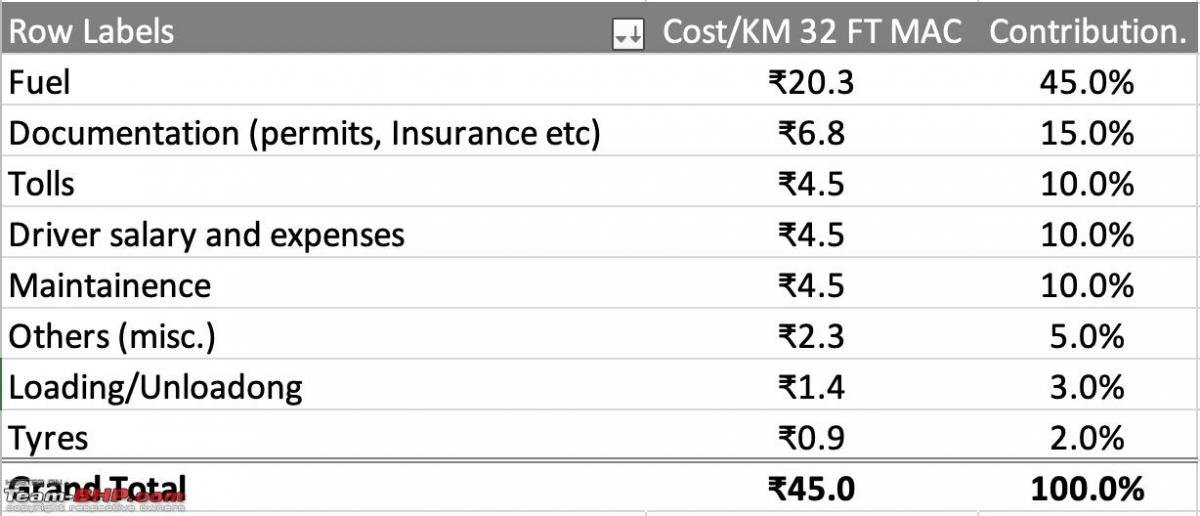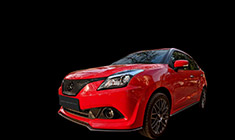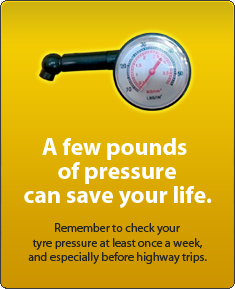News
Trucks in India: What is the cost per km for these vehicles
I am looking for a cost per km that includes fuel, maintenance, approximate manpower costs, tolls, etc.
BHPian arpanjha recently shared this with other enthusiasts.
We petrolhead T-Bhpians have various informed data for running costs for our cars, motorbikes and now even EVs. But does anyone have a fair idea for running costs for a commercial vehicle (mainly a commodity transporting truck)?
I am looking for this data for the below reasons:
- Come to a generalized idea at how much or by what margin % does transportation cost add up to the product's final cost. (Including the taxation portion)
- How varied are running costs of commercial vehicles w.r.t. commodity, for example, how much does carrying vegetables cost vis-à-vis carrying steel or similar trends.
- Maybe this is naive, but how different is the figure when compared to personal vehicle expenses.
- Does cost per km vary w.r.t. inter-city haulage, and long-range haulage?
I am looking for a cost per km that includes fuel, maintenance, approximate manpower costs, tolls etc.
Here's what BHPian TheARUN had to say about the matter:
I've never come across such a thread, thanks for starting this.
I've been researching this as a pet subject for years. I would be able to explain this in great detail but suffice to say, for now, the thumb rule for a truck is Rs.50 per kilometre.
There is a place called Sankagiri near Salem in Tamil Nadu. Everybody in the town is somehow or the other connected to the trucking business. So much so that Ashok Leyland till a few years back sold a model called 'Sankagiri Express'.
The business model they follow there is the owner renting the truck out to the driver. The driver gets paid 17 paise per kilometre and the truck is out running loads for 15+ days at a time. After 15+ days the truck comes back, the driver hands over the earnings to the owner minus his 17 paise per kilometre. There are many in-between calculations, eg. Pooja charges are deductible at 100Rs. per day. Loading and unloading charges have to be paid by the driver from his 17 paise. FastTag charges are borne by the owner. The driver keeps an account of all expenses, fuel, commission paid to get load etc.
For long-distance inter-city buses, the thumb rule is Rs.2 per Kilometer for the fare per passenger. Eg. Bangalore to Hyderabad is 600 kilometres so the fare per passenger should be 1,200 rupees per passenger.
It's extremely complicated and time-consuming to calculate the exact expenses.
E.g. Tyres. Trucks come with steel-belted radials from the showroom, they get exchanged immediately for tubeless tyres. The good branded ones cost 35,000 a pair when I checked last, many use 'Chinese tyres' that cost 22,000 a pair. Tyres last from anywhere between 75,000 to 90,000 and then get retreaded to last another 40,000 kilometres. A tyre can be retreaded twice. Some tyres burst and last only 20,000 - 40,000 kilometres when new, some cannot be retreaded. Some can be retreaded only once, so very difficult to calculate the cost overall.
Also, fuel expenses vary according to the terrain. On highways, it's 3+kmpl, on ghat sections it's 1.5liters per kilometre. Depends on which route the truck gets loaded for.
Trucking in the olden days used to be a 6-wheel affair, then with the 2213 from TATA it moved to 10 wheels, for sometime tractor-trailers dominated, nowadays it's the multi-axle trucks, with anything from 10 to 20 tyres with 3 to 6 axles. There are all types of configurations, twin steer to 2 lift axles. Right now the winner is the Ashok Leyland 3520, with 2 twin steer axles in front and 8 tyres at the back in 2 axles, 1 drive and 1 dummy axle.
Here's what BHPian Mr.RaghavDhir had to say about the matter:
The cost per KM of a truck depends on multiple factors such as truck types.
- The material they carry (volumetric [candies] or dense loads [auto parts]).
- Age of the truck (maintenance and EMI costs vary accordingly).
- Size of the fleet of the fleet owner (a larger fleet owned by an owner impacts maintenance costs by up to 15%).
- Truck Make (Some trucks brands deliver a slightly higher mileage, wouldn’t want to name any brand to avoid controversy though this difference is offset to an extent in the capital cost).
- Geographical lanes in which the trucks operate (diesel prices vary across the country so do tolls and traffic fines/penalties. This is a major factor as tolerance for overloading/Over dimensions varies across the country thereby limiting the maximum loaded weight of a truck. Rajasthan-Gujrat border is the most stringent in the country for this).
- Type of market the truck services (if a truck services big brands they have very high compliance requirements from the truck such as tyre depth, specific truck floor requirements, truck body requirements eg. Glass manufacturers such as Saint Gobain require very strong truck sides which requires additional reinforcements and investment from the fleet owner).
- Type of customers a truck services (customers were waiting periods are high the monthly running is low hence a lower denominator and a higher cost).
- Seasonality (Diwali season in North, pre-Diwali season for paint customer increases loading and unloading waiting periods as these are sales peaks, though these do not have a very high impact when averaged out over the year) to name a few.
Typically, for a 32 feet multi-axle truck within its EMI period costs are as follows. Of course, these are very general calculations and will vary greatly with the above calculations.
Here's what BHPian Mr.Boss had to say about the matter:
The commercial segment is something that couldn't be taken into 2 or 3 baskets like passenger cars. Every single application has got its own expense and business model. Few examples:
- Tankers always run one way with load and return journey is always empty.
- Highway and long haul trucks go with a rated load but mining trucks are mostly overloaded. So the wear & tear is obviously different.
- Manpower and other expenditures depend on how big the fleet is. Bigger fleets operate with their own service centres and even I know a few cases where some of the regular failure parts (including bigger casting parts) were locally manufactured by them.
- Toll charges vary for 2 axle and multi-axle vehicles.
The list goes big enough.
Check out BHPian comments for more insights and information.
- Tags:
- Indian
- Member Content
- Trucks
















.jpg)



